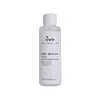What's inside
What's inside
 Key Ingredients
Key Ingredients

 Benefits
Benefits

 Concerns
Concerns

 Ingredients Side-by-side
Ingredients Side-by-side

Water
Skin ConditioningGlycolic Acid
BufferingCaprylic/Capric Triglyceride
MaskingGlycerin
HumectantSodium Hydroxide
BufferingBeheneth-5
EmulsifyingDimethicone
EmollientNeopentyl Glycol Dicaprylate/Dicaprate
EmollientPolyglyceryl-3 Stearate
EmulsifyingBehenyl Alcohol
EmollientUndecane
EmollientArachidyl Alcohol
EmollientStearyl Alcohol
EmollientCetyl Alcohol
EmollientPhospholipids
Skin ConditioningAllantoin
Skin ConditioningTocopheryl Acetate
AntioxidantChamomilla Recutita Flower Extract
MaskingHelianthus Annuus Seed Oil
EmollientBisabolol
MaskingArctium Lappa Seed Oil
EmollientDipotassium Glycyrrhizate
HumectantPanthenol
Skin ConditioningSodium Acrylates Copolymer
Tridecane
PerfumingHydrogenated Polydecene
EmollientSclerotium Gum
Emulsion StabilisingPolyglyceryl-10 Stearate
Skin ConditioningDisodium EDTA
Tocopherol
AntioxidantChlorphenesin
AntimicrobialBenzoic Acid
MaskingSorbic Acid
PreservativeEthylhexylglycerin
Skin ConditioningPhenoxyethanol
PreservativeWater, Glycolic Acid, Caprylic/Capric Triglyceride, Glycerin, Sodium Hydroxide, Beheneth-5, Dimethicone, Neopentyl Glycol Dicaprylate/Dicaprate, Polyglyceryl-3 Stearate, Behenyl Alcohol, Undecane, Arachidyl Alcohol, Stearyl Alcohol, Cetyl Alcohol, Phospholipids, Allantoin, Tocopheryl Acetate, Chamomilla Recutita Flower Extract, Helianthus Annuus Seed Oil, Bisabolol, Arctium Lappa Seed Oil, Dipotassium Glycyrrhizate, Panthenol, Sodium Acrylates Copolymer, Tridecane, Hydrogenated Polydecene, Sclerotium Gum, Polyglyceryl-10 Stearate, Disodium EDTA, Tocopherol, Chlorphenesin, Benzoic Acid, Sorbic Acid, Ethylhexylglycerin, Phenoxyethanol
 Reviews
Reviews

Ingredients Explained
These ingredients are found in both products.
Ingredients higher up in an ingredient list are typically present in a larger amount.
Glycolic Acid is arguably the most famous alpha hydroxy acid (AHA) with tons of research backing its benefits.
It is found naturally in sugar cane but the form used in skincare is usually synthetic for purity and stability.
Glycolic acid removes the top layer of dead skin cells to allow newer and fresher ones to emerge.
AHAs work by breaking down the structural “glue” that holds old skin cells in place. When that buildup is gone, your skin can renew itself more efficiently.
Research also shows glycolic acid stimulates collagen production, helping to firm and thicken the skin over time. This is one of its biggest advantages over other AHAs.
Overall, glycolic acid helps with:
Fun fact: Glycolic acid boosts skin hydration by helping it produce molecules that increase hyaluronic acid naturally.
To work best, glycolic acid products should have a pH between 3-4 (that’s where exfoliation is most effective but still gentle on skin).
The pH and concentration of a product are key to its effectiveness:
It is normal to feel a slight stinging sensation when using glycolic acid. This usually fades as your skin adjusts.
Because glycolic acid has the smallest molecular size in the AHA family, it can penetrate deeper, which enhances its effectiveness but also makes it more likely to irritate sensitive skin.
If your skin is very sensitive or prone to rosacea, glycolic acid may be too strong; in that case, try milder options like lactic acid or a PHA instead.
Recent studies suggest glycolic acid might even help protect against UV damage. But don’t skip sunscreen! Freshly exfoliated skin is more sensitive to the sun.
Glycolic acid is a skincare superstar. It smooths, brightens, hydrates, and firms the skin. Unless you’re highly sensitive, it’s well worth adding to your routine.
Read more about some other popular AHA's here:
Learn more about Glycolic AcidPhenoxyethanol is a preservative that has germicide, antimicrobial, and aromatic properties. Studies show that phenoxyethanol can prevent microbial growth. By itself, it has a scent that is similar to that of a rose.
It's often used in formulations along with Caprylyl Glycol to preserve the shelf life of products.
Sodium Hydroxide is also known as lye or caustic soda. It is used to adjust the pH of products; many ingredients require a specific pH to be effective.
In small amounts, sodium hydroxide is considered safe to use. However, large amounts may cause chemical burns due to its high alkaline.
Your skin has a natural pH and acid mantle. This acid mantle helps prevent harmful bacteria from breaking through. The acid mantle also helps keep your skin hydrated.
"Alkaline" refers to a high pH level. A low pH level would be considered acidic.
Learn more about Sodium HydroxideWater. It's the most common cosmetic ingredient of all. You'll usually see it at the top of ingredient lists, meaning that it makes up the largest part of the product.
So why is it so popular? Water most often acts as a solvent - this means that it helps dissolve other ingredients into the formulation.
You'll also recognize water as that liquid we all need to stay alive. If you see this, drink a glass of water. Stay hydrated!
Learn more about Water